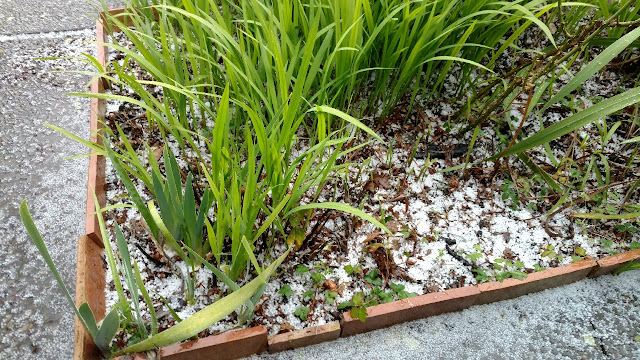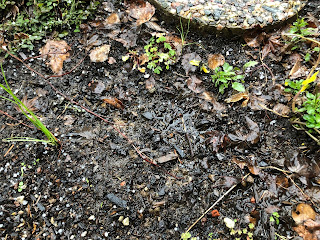

|
| Friday morning hail turned flower beds white in Sacramento's Greenhaven/Pocket neighborhood. (Photo: Debbie Arrington) |

|
|
The hailstones will just add to the soggy conditions here
when they melt. Stepping stones are a good idea in
areas that stay wetter long. (Photo: Kathy Morrison)
|
Comments
0 comments have been posted.Sacramento Digs Gardening to your inbox.
Sites We Like
Garden Checklist for week of Oct. 27
It's still great weather for gardening. Grab a sweater – and an umbrella, just in case – then get to work:
* October is the best month to plant trees, shrubs and perennials.
* Harvest pumpkins and winter squash.
* Pick apples and persimmons. Remember to pick up fallen fruit, too; it attracts pests.
* Clean up the summer vegetable garden and compost disease-free foliage.
* Dig up corms and tubers of gladioli, dahlias and tuberous begonias after the foliage dies. Clean and store in a cool, dry place.
* Treat azaleas, gardenias and camellias with chelated iron if leaves are yellowing between the veins.
* Now is the time to plant seeds for many flowers directly into the garden, including cornflower, nasturtium, nigella, poppy, portulaca, sweet pea and stock.
* Plant seeds for radishes, bok choy, mustard, spinach and peas.
* Plant garlic and onions.
* Set out cool-weather bedding plants, including calendula, pansy, snapdragon, primrose and viola.
* Reseed and feed the lawn. Work on bare spots.